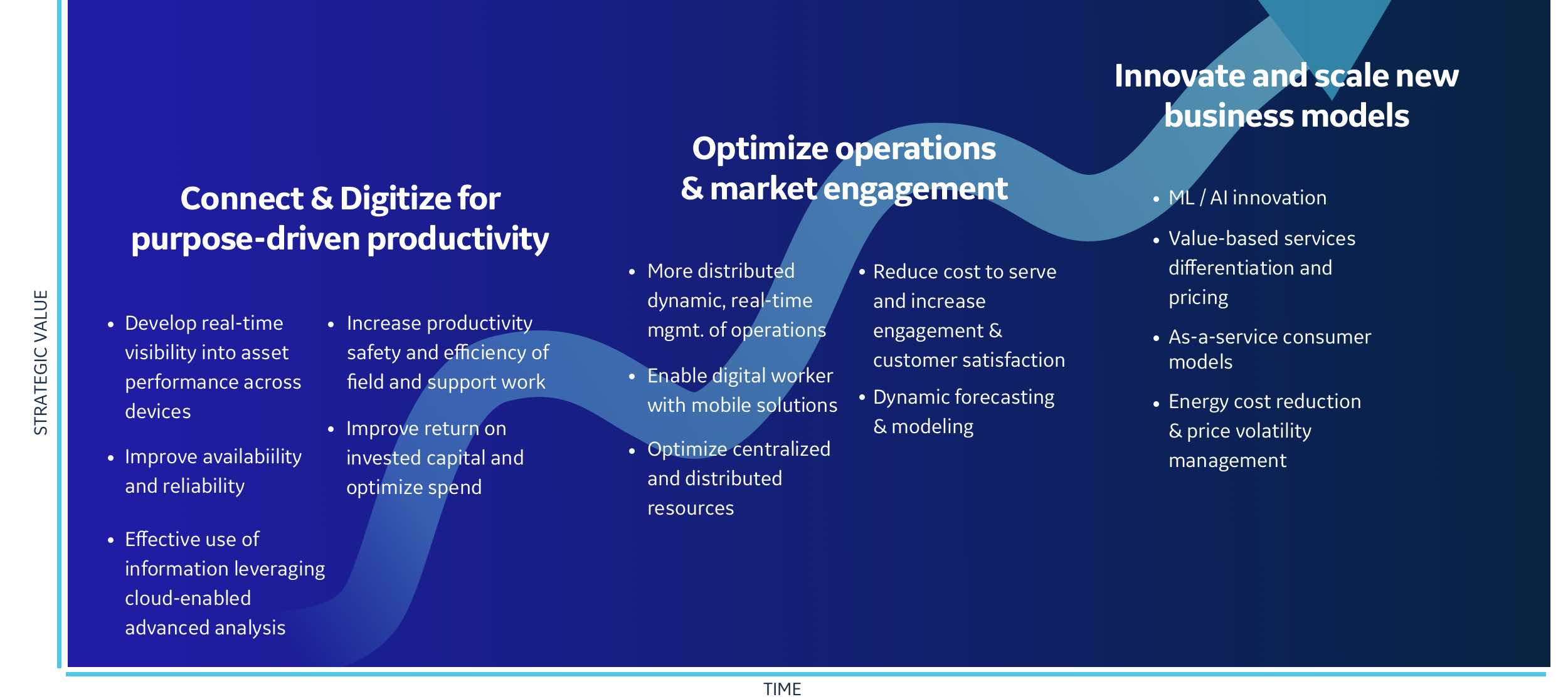
Whatever industry you are in, it is impossible to avoid the Industrial Internet of Things (IIoT), Industry 4.0, and the barrage of buzzwords that accompany both. Digital Twins, artificial intelligence (AI), machine learning, predictive maintenance, and cybersecurity – there are enough new tools and technologies already out there and coming new onto the market to make a manufacturer’s head spin.
But while these technologies are new to many manufacturers, the market is moving quickly, and there are already plenty of leading industrial companies that are seeing the benefits of their digital transformation activities at sustained speed and scale.
Why bother? The potential is huge. Using these advanced software technologies to connect machines to the Industrial Internet of Things (IIoT) offers significant cost savings through improved productivity, reduced waste, and optimized maintenance processes. For those who are interested, they can also open new business models such as servitisation, which could end up being the holy grail of value creation for both customers and manufacturers.
Servitisation is the process of developing capabilities to provide services and solutions that supplement traditional product offerings and provide additional revenue streams. This approach also guards against disruption from external “tech” competitors – something the consumer taxi, hotel, and music industries know well, ever since the rise of Uber, Airbnb, and Spotify turned traditional business models on their heads.
Digital Journey
Three key stages of the digital transformation journey
What kinds of companies are leading with these digital transformation activities? The truth is, different industries are adopting different technologies at different paces, but in every industry, there are leaders who are achieving real results. For these leaders, Industry 4.0 is no longer a thought leadership topic, but an enabling agent in their growth strategies.
At GE Digital, we see three key stages of this journey: connecting, optimizing, and innovating.

A typical digital industrial journey
Connect and digitize
The first step in transforming your operation includes the development of real-time visibility into asset performance across devices. With a thoroughly connected and digital-oriented enterprise, you can begin to capture more data and make it actionable.
Optimize operations
Once connected, the transformation continues with a more distributed dynamic and real-time management of operations.
Now you can use your data as a differentiator—leveraging relevant real-time insights to reduce delivery time and increase throughput, for example. It’s about getting visibility into plant operations, boosting productivity, enabling flexibility, accelerating time to market, and meeting customers’ needs.
Innovate and scale
The third and final stage of a digital transformation entails utilizing machine learning and AI innovation to enable value-based service differentiation and pricing. Take things to the next level with machine learning and AI, allowing you to enable value-based service differentiation and pricing.
Digital Transformation in Manufacturing
According to recent research performed by GE Digital and IndustryWeek, 1-in-4 companies stated that “they are just not there yet technologically” when it comes to digital transformation.
It’s time to overcome the internal barriers to digital transformation. Here’s how some companies were able to drive success.
Subaru is a great example of how automation software, industrial data management, and analysis can have a huge impact on productivity. Subaru is the fastest growing automotive company in the USA and over the last 12 years, GE Digital’s Proficy suite of products has helped them to:
- Increase production volume by 300%, meeting annual demand growth without increasing the size of production facilities
- Deliver the fastest turnaround time for any car in the USA; only 24 days from order to completion
- Increased uptime in their trim shop to 98.6% in 2018 (following eight years of increased uptime and quality improvements
While Subaru’s journey started with GE Digital’s HMI/SCADA, the team enhanced its innovation and optimization even further with historian, MES and APM.
Similarly, Symeta Hybrid – which prints and mails more than 1,800,000 personalized pages for its customers every day – was able to achieve 99% delivery reliability. The company built on a foundation of GE Digital’s HMI/SCADA, enhancing with MES and scheduling solutions. Now, the team has 100% reason visibility into downtime for optimization.
Lastly, Yuria-Pharm, a specialized pharmaceutical corporation, implemented a three-level manufacturing solution with local control and automation of process sections, supervisory control, and analytics. Among other results, Yuria-Pharm has achieved a 20% increase in OEE, 70% decrease in productivity losses, and an 80% decrease in downtime.
Solutions for today. Scale for tomorrow.
Digital transformation is here, so how are you going to drive that value for your business?
Cost savings, improved productivity, reduced waste, optimized maintenance processes, new business models and improved customer service are all in the mix when it comes results.
You need ideas that move your business forward—ideas that work, and there’s plenty of inspiration if you just look around.
Matt Wells, Vice President, Product Management, GE Digital
